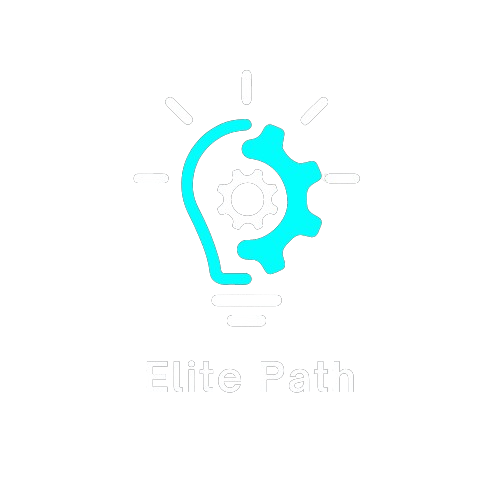The Power of Cold Calling in Modern Appointment Setting
Cold calling remains one of the most powerful tools for generating leads and building business relationships. Despite the rise of automation and social media, the ability to connect directly with prospects through genuine conversation holds a unique place in sales. Cold calling allows professionals to humanize the sales process, build trust faster, and uncover opportunities that email or ads might miss. A strong cold calling appointment setting training program helps transform hesitant callers into confident communicators who can spark interest and secure appointments with ease.
This type of training emphasizes communication, mindset, and strategy—key elements that determine whether a call becomes an opportunity or ends as a rejection. When done right, cold calling creates the foundation for meaningful client relationships, drives predictable sales growth, and enhances brand credibility. The key is not just making the call, but mastering how to deliver value in every conversation. That’s where structured training comes into play, teaching sales professionals how to convert cold outreach into warm leads and scheduled appointments.
Building the Foundation: What Cold Calling Appointment Setting Training Covers
Cold calling appointment setting training builds more than just sales skills—it develops discipline, confidence, and resilience. Trainees learn how to navigate conversations with poise, even in the face of rejection. A strong program teaches active listening, persuasion, and the art of empathy, which are vital for understanding what prospects truly need. Participants discover how to identify key decision-makers, frame their offer effectively, and adapt to various personality types on the phone.
The curriculum typically focuses on psychological triggers that motivate prospects to take action. It breaks down how to create meaningful dialogue that doesn’t feel robotic or pushy. Learners also gain insight into how to prepare before every call by researching their prospects’ industries, needs, and pain points. This preparation not only improves confidence but also increases conversion rates. Training sessions emphasize that success in cold calling is not about luck—it’s about consistent preparation, proper technique, and a winning attitude.
Step-by-Step Framework Taught in Cold Calling Appointment Setting Training
Every call follows a structure that determines its outcome. Cold calling appointment setting training provides a step-by-step framework that guides professionals through every phase of a successful conversation. It starts with research and preparation, where participants learn to study their target audience, understand industry challenges, and create a strong opening line. Script development is another essential component, teaching how to craft flexible scripts that sound natural and conversational rather than rehearsed.
The framework also emphasizes how to open the call effectively within the first ten seconds—a critical moment that decides whether the prospect stays engaged or hangs up. Handling objections becomes easier with proven techniques such as acknowledging the concern, reframing the value, and guiding the conversation toward a solution. Finally, trainees master closing strategies that encourage prospects to schedule appointments confidently without feeling pressured.
A well-rounded training program also includes lessons on the follow-up process, ensuring every lead is nurtured properly. Regular follow-ups show professionalism and persistence, two traits that distinguish great appointment setters from average ones. With practice, the framework becomes second nature, allowing callers to move fluidly through conversations with focus and ease.
Mastering the Art of Communication and Tone
Effective communication is at the heart of every successful cold call. Cold calling appointment setting training helps participants understand how tone, pacing, and delivery influence the outcome of a conversation. A confident yet friendly tone builds trust and encourages prospects to listen. Learning how to match and mirror a prospect’s speaking style can also create instant rapport.
Trainees practice active listening to identify subtle cues in a prospect’s responses. This enables them to respond naturally rather than rely solely on scripts. Emotional intelligence plays a key role as well—it allows callers to sense when to push forward or when to pause and let the prospect lead. Training sessions often include exercises to improve pronunciation, pacing, and vocal energy, ensuring every word carries authority and warmth.
When mastered, communication skills turn a standard sales pitch into an engaging conversation. A well-trained caller not only delivers a message but also conveys sincerity, which can make all the difference between a polite “no” and an appointment booked.
Overcoming Common Cold Calling Challenges
Cold calling comes with its share of challenges, from rejection to low response rates. Training programs prepare participants to handle these hurdles with confidence. Rejection, for example, is reframed as a learning opportunity rather than a failure. Learners discover how to adjust their scripts, improve their delivery, and approach each new call with renewed energy.
Common obstacles such as call reluctance, gatekeepers, and inconsistent performance are also addressed through mindset exercises and practical techniques. The goal is to build resilience and develop strategies that maintain motivation even after tough days. Training sessions teach how to track call performance, measure conversion rates, and identify weak spots that need improvement.
To stay productive and positive, participants are often encouraged to:
- Set daily call targets and reward progress
- Use scripts as guides, not crutches
- Reflect on each call to identify improvement areas
- Practice visualization and confidence-building exercises
By adopting these practices, cold callers learn to turn challenges into stepping stones for long-term success.
Tools and Technology That Enhance Cold Calling Appointment Setting Training
Modern cold calling relies heavily on technology to streamline processes and track results. Training programs introduce participants to essential tools that optimize performance. Customer Relationship Management (CRM) systems, for example, help organize leads, track communication, and record follow-up schedules. Call tracking software analyzes conversation quality and identifies improvement areas.
AI-driven tools also play an important role in training. They can transcribe calls, analyze speech patterns, and offer feedback on tone and phrasing. This allows participants to measure their growth and fine-tune their approach. Additionally, trainers emphasize the use of scheduling and automation platforms to handle repetitive tasks, allowing callers to focus on building relationships rather than administrative work.
With the right combination of tools and training, cold callers gain efficiency, consistency, and clarity. These technologies complement human skill, not replace it, ensuring every interaction remains personal and effective.
Role-Playing and Real-Time Feedback: The Secret to Rapid Improvement
Role-playing exercises are a cornerstone of effective cold calling appointment setting training. By simulating real-world scenarios, trainees gain hands-on experience and confidence before engaging with actual prospects. Each session provides a safe environment to test different approaches, refine scripts, and experiment with objection-handling strategies.
Trainers offer real-time feedback, pointing out both strengths and areas for growth. This immediate correction accelerates learning and builds muscle memory for high-pressure situations. Participants learn to adapt to various personality types and industries, making them more versatile in real calls.
Key benefits of role-playing include:
- Sharpening listening and response skills
- Building confidence under pressure
- Developing consistency across calls
- Receiving personalized coaching for improvement
The more participants practice, the more natural and authentic their delivery becomes. Over time, these exercises foster mastery through repetition and reflection.
Metrics That Matter in Cold Calling Appointment Setting
Measurement drives improvement. Training programs teach the importance of tracking key performance indicators (KPIs) to monitor progress. These may include call volume, contact rates, appointment conversions, and response times. Understanding these numbers helps sales professionals set realistic goals and refine their strategies.
By analyzing results regularly, participants can identify what works best and eliminate ineffective habits. Trainers also emphasize the importance of quality over quantity—fewer well-executed calls can outperform a high volume of unqualified ones. Data-driven decision-making ensures consistent growth and helps professionals understand which adjustments yield the best results.
Ultimately, metrics not only track performance but also build accountability and motivation. Seeing tangible progress keeps callers focused and inspired to improve continuously.
How Cold Calling Appointment Setting Training Elevates Sales Teams
A well-trained appointment setter becomes a powerful asset to any sales team. Training improves alignment between setters and closers, ensuring smoother handoffs and higher close rates. Teams that undergo regular cold calling appointment setting training often experience increased confidence, stronger communication, and more consistent lead flow.
When each team member understands their role in the sales process, collaboration becomes seamless. Setters become experts in identifying qualified leads, while closers can focus on converting them. Continuous learning also keeps teams competitive, adapting to new market trends and customer behaviors.
The long-term impact of training extends beyond individual performance—it transforms the culture of an organization. Teams become more proactive, motivated, and goal-oriented, resulting in stronger revenue growth and customer satisfaction.
Common Misconceptions About Cold Calling and How Training Breaks Them
Many believe that cold calling is outdated or ineffective. However, structured training programs reveal that it remains one of the most personal and impactful ways to connect with potential clients. Training dispels myths such as “nobody answers calls anymore” or “cold calling is just interrupting people.” Instead, it shows how well-prepared, empathetic communication turns cold leads into interested prospects.
Another misconception is that success in cold calling depends purely on charisma. Training teaches that preparation, consistency, and adaptability are what truly drive results. It also reinforces that rejection is part of the process—not a reflection of one’s ability. With the right mindset and tools, cold calling becomes a strategic process that yields measurable success.
Choosing the Right Cold Calling Appointment Setting Training Program
Selecting the best training program is crucial for lasting success. Professionals should look for courses that combine theory with real-world application. A strong program includes role-playing, personalized coaching, and opportunities to practice live calls. Trainers with industry experience provide valuable insights and feedback that can’t be learned from scripts alone.
Online programs offer flexibility, while in-person sessions provide hands-on mentorship and peer interaction. The right choice depends on learning style, goals, and schedule. Before enrolling, it’s important to assess the curriculum, trainer credibility, and support materials. Investing in a high-quality program may cost more initially, but the return on investment—through improved conversions and confidence—is far greater in the long run.
Frequently Asked Questions (FAQ)
- How long does it take to see results from training? Most participants notice improvement within two to four weeks of consistent practice.
- Do I need prior sales experience to succeed in cold calling? No, structured training builds skills from the ground up, making it suitable for beginners.
- What are the most common mistakes beginners make? Talking too much, not listening actively, and failing to follow up are frequent issues.
- How often should cold callers refresh their training? Every three to six months helps maintain momentum and keep up with new techniques.
- Can this training help freelancers or remote teams? Absolutely. Many programs are designed for remote professionals who want to scale their appointment-setting services.
Takeaway
Cold calling appointment setting training empowers individuals and teams to turn cold conversations into warm opportunities. With the right mindset, communication techniques, and tools, anyone can learn to navigate calls confidently and consistently secure appointments. Mastery comes through repetition, data-driven improvement, and a genuine desire to help prospects find solutions. When training is approached as an ongoing journey rather than a one-time task, the results go far beyond more appointments—they build stronger sales careers and lasting client relationships.











